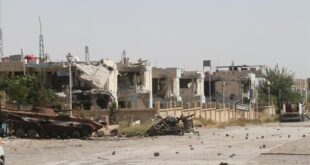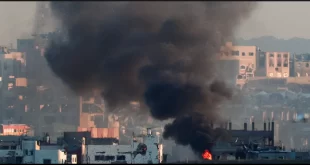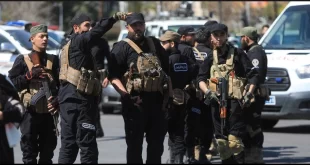Jan 8, 2015, al-Akhbar
Al-Qaeda branch in Syria, al-Nusra Front, have blown up the 13th century tomb of a revered Islamic scholar in southern Syria, Syrian state news agency SANA and the Syrian Observatory for Human Rights, a monitoring group, reported on Wednesday.
The mausoleum of Imam Nawawi is in Nawa in Deraa province near the Jordanian border, which Nusra Front captured parts of in November.
Militants of both Nusra and the Islamic State of Iraq and Syria (ISIS) extremist group, which has declared an ‘Islamic State’ on large swathes it seized in Iraq and Syria, see tombs as sacrilegious and have demolished many such shrines, destroying cultural heritage sites and burning precious manuscripts and archives.
According to a UN report published in September, nearly 300 cultural heritage sites have been destroyed, damaged and looted in Syria since 2011.
The report focused on 18 areas, of which six are UNESCO-listed: the Old City of Aleppo; Bosra; Damascus, the Dead Cities of northern Syria; Crac des Chevaliers and Palmyra.
Detailed analysis of satellite imagery of 290 locations at these sites showed 24 of them had been destroyed, 104 severely damaged, 85 moderately damaged and 77 possibly damaged.
Earlier in September, ISIS blew up a Muslim shrine and rigged one of the region’s oldest churches with explosives in the Iraqi city of Tikrit.
Al-Arbain mosque, which was dynamited in Iraq, was the reputed burial site of 40 early Muslim figures, including companions of Prophet Mohammad.
Elsewhere in the hometown of executed former president Saddam Hussein, ISIS also rigged the Green Church, a striking structure carved into the rock and first built in the seventh century.
The extremist group has also destroyed shrines, churches and precious manuscripts in Mosul and other areas of Iraq it controls and excavated sites to sell objects abroad, in what UNESCO chief Irina Bokova, has previously described as “cultural cleansing.”
Bokova in November, slammed the “barbaric” destruction of Iraq’s cultural heritage, as ISIS militants destroy age-old sites in areas they control.
Iraq has “thousands of temples, of buildings, of archaeological sites, of objects, that represent a treasure for (all) humanity,” Bokova said during a visit to Baghdad.
“We cannot agree that this treasure, that this legacy of human civilization, is being destroyed in the most barbaric manner,” she said.
“We have to act, we don’t have time to lose, because extremists are trying to erase the identity, because they know that if there is no identity, there is no memory, there is no history, and we think this is appalling and this is not acceptable.”
In September, officials said that ISIS militants are using intermediaries to sell priceless treasures, such as ancient Iraqi artefacts, on the black market to finance their activities.
The militants gained some experience of dealing in antiquities after taking control of large parts of Syria, but when they captured the northern Iraqi city of Mosul and the Nineveh province in June, they gained access to almost 2,000 of Iraq’s 12,000 registered archaeological sites.
Speaking at a conference at the UN cultural agency UNESCO in Paris to warn of the risk to Iraq’s heritage, Qais Hussein Rasheed, head of the Baghdad Museum, said organized groups were working in coordination with ISIS.
“It’s an international artefacts’ mafia,” he told reporters. “They identify the items and say what they can sell,” he said. Since some of these items were more than 2,000 years old it was difficult to know exactly their value
 Syria Support Movement solidarity with the Syrian people
Syria Support Movement solidarity with the Syrian people




